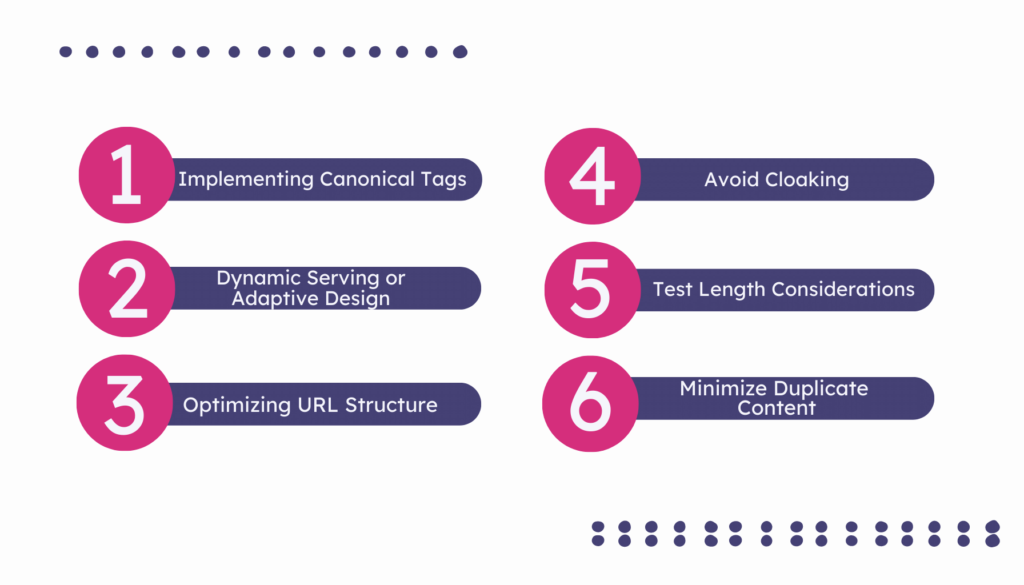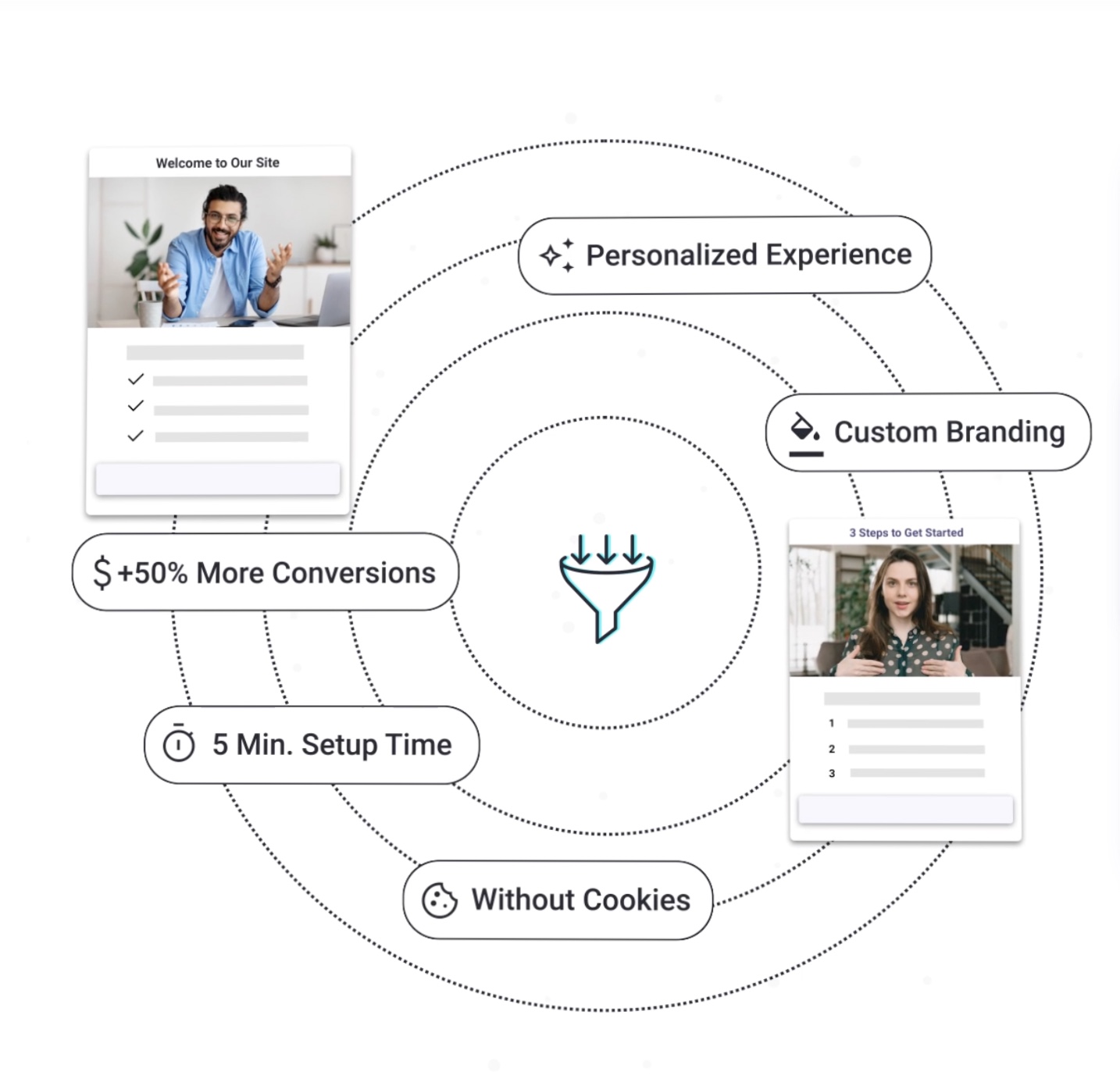How to Run an AB Test on Your Website Without Affecting Your SEO


A/B testing has become a crucial practice for optimizing website performance and user experience in the last few years. By systematically comparing different versions of web pages, you can gain valuable insights into user preferences, behavior, and conversion rates. However, for SEO experts, there is a lingering concern about the potential negative impact of A/B testing on search engine optimization (SEO) efforts.
Search engines rely on various factors to determine the relevance and ranking of web pages in search results. Any changes made during A/B testing, if not properly managed, can inadvertently affect these factors and potentially harm the website’s organic visibility. Consequently, it is essential for SEO experts to understand how to conduct A/B tests without compromising the website’s SEO integrity.
Let’s explore strategies and best practices for running experimental campaigns on your website while mitigating the risk of negative SEO impact. We’ll provide methods to structure your A/B tests and technical insights on maintaining SEO compatibility throughout the testing process. By following these guidelines, SEO experts can confidently implement A/B testing to enhance website performance without compromising organic search visibility.
Understanding the Relationship Between A/B Testing and SEO
A/B testing, also known as split testing, is a data-driven methodology that allows website owners to compare two or more versions of a web page to determine which variation performs better in terms of user engagement and conversions. It involves dividing website traffic into different segments and presenting each segment with a distinct version of a web page, measuring and analyzing user behavior and response to determine the winning variation.
The purpose of A/B testing is to optimize website performance by identifying elements and variations that positively impact user experiences and desired outcomes, such as increased conversions, reduced bounce rates, or higher engagement. By systematically testing different design elements, content variations, or layout modifications, you can make data-backed decisions to enhance the effectiveness of your website.
While A/B testing is a powerful tool for optimizing websites, it’s imperative to prioritize maintaining SEO integrity throughout the testing process. SEO is essential for ensuring visibility in search engine results pages (SERPs) and driving organic traffic to the website.
Maintaining SEO during A/B testing is crucial because search engines rely on various signals to determine the relevance and ranking of web pages. Any modifications made during A/B testing can impact these signals and potentially affect the website’s organic search performance. Therefore, SEO experts must be cognizant of the potential risks and adopt strategies that allow for accurate testing while preserving SEO factors.
Neglecting SEO considerations during A/B testing can lead to unintended consequences, such as diminished organic visibility, duplicate content issues, or inconsistent user experiences.
How to Structure the AB Test for SEO Compatibility
1. Implementing Canonical Tags
Canonical tags, a small piece of HTML code, ensure SEO compatibility and mitigate potential duplicate content issues. The purpose of canonical tags is to inform search engines about the preferred version of a web page when multiple variations exist. By specifying the canonical URL, you help search engines understand which version should be indexed and displayed in search results.
Proper implementation of canonical tags is essential to avoid confusion and prevent search engines from interpreting the A/B test variations as duplicate content. Each test variation should have a unique canonical tag pointing to its respective URL. This ensures that search engines recognize the variations as separate pages rather than identical duplicates, preserving the integrity of your SEO efforts.
2. Using Dynamic Serving or Adaptive Design
To facilitate A/B testing without impacting SEO, you can leverage dynamic serving or adaptive design techniques. These approaches allow you to deliver different versions of your website to users and search engines based on their device type, user agent, or other factors, while ensuring that all variations are accessible for crawling and indexing.
Dynamic serving involves dynamically generating HTML and CSS based on the user-agent requesting the page. This enables you to present different A/B test variations while maintaining a single URL structure. By detecting the user agent, you can serve the appropriate variation and ensure that search engines can crawl and index each version correctly.
Adaptive design involves using CSS media queries to adjust the layout and presentation of the website based on the device accessing it. By applying adaptive design principles, you can create different visual experiences for A/B test variations while keeping the URL structure consistent. This approach ensures that search engines can efficiently crawl and index all variations while maintaining SEO integrity.
3. Optimizing URL Structure
Maintaining a consistent URL structure is crucial for SEO compatibility during A/B testing. It helps search engines understand the relationship between different versions and ensures smooth user navigation. There are two key aspects to consider when optimizing the URL structure for A/B testing:
- Maintaining Consistent URLs: Ensure that the base URL remains the same for all test variations. This means that regardless of the version users land on, the URL should reflect a consistent structure. Consistency in URLs helps search engines recognize the relationship between the different variations and prevents confusion.
- Redirecting Users and Search Engines: When users or search engine crawlers access a specific URL, it’s important to redirect them to the appropriate variation based on their initial interaction. Implement proper redirects using HTTP status codes (e.g., 301 redirects) to guide users and search engines to the relevant version. This ensures that search engines index the correct variation and users are seamlessly directed to the intended experience.

4. Avoid Cloaking
Cloaking, which involves displaying different content to search engines and users, should be strictly avoided during A/B testing. Search engines consider cloaking as a deceptive technique that undermines the integrity of organic search results. If search engines detect cloaking, it can result in severe penalties, including loss of organic visibility.
To maintain transparency and consistency, present the same content to both search engines and users during A/B testing. This ensures that search engines accurately evaluate and index the variations being tested while providing users with a consistent experience. Avoid employing any tactics that manipulate content visibility based on the user’s identity or agent, as this can harm your website’s SEO.
5. Test Length Considerations
Determining the appropriate duration for A/B tests is vital to obtain statistically significant results without unnecessarily exposing users to multiple variants for extended periods. A test that is too short may not provide sufficient data to draw meaningful conclusions, while an excessively long test can impede website performance and delay the implementation of winning variations.
There are a few factors to consider when determining the optimal test length. Firstly, consider your website’s traffic volume. Higher-traffic websites can typically reach statistical significance faster compared to lower-traffic sites. Secondly, take into account the expected conversion rates. If your website has low conversion rates, a longer test may be necessary to achieve statistical significance. Lastly, consider the desired level of confidence. Higher confidence levels require longer testing durations.
Use statistical significance calculators or A/B testing platforms to estimate the required sample size and duration based on your specific circumstances. This ensures that your A/B tests are conducted with sufficient rigor and yield meaningful results within an appropriate timeframe.
6. Minimize Duplicate Content
Minimizing the presence of duplicate content will avoid confusion for search engines and preserve the SEO value of individual variations. Duplicate content can dilute search engine signals, leading to difficulties in indexing and ranking relevant pages.
To minimize duplicate content issues, ensure that each variation has unique and distinct content elements while maintaining consistency in branding, messaging, and the overall user experience. Focus on modifying specific elements or sections of the page while keeping other components consistent across variants.
Pay attention to the technical aspects of duplicate content mitigation. Implement canonical tags, as discussed earlier, to specify the preferred version of a page and indicate its original source. This helps search engines understand the purpose and uniqueness of each variant while avoiding duplicate content penalties.
Run A/B Testing with Pathmonk's Personalized Micro-Experiences
Another effective approach to running A/B tests while maintaining SEO compatibility is by leveraging Pathmonk Accelerate’s personalized micro-experiences. Pathmonk offers a powerful platform that enables users to test messages, creative assets, and calls-to-action (CTAs) in real-time, based on their users’ intent. This method provides a quick understanding of what resonates best with the target audience without negatively impacting SEO.
More Sales From Your Website With AI
Personalized interactions based on your users' behaviour to get +50% more conversions.

Pathmonk’s personalized micro-experiences operate by dynamically modifying website content and user interactions based on real-time visitor data and behavioral signals. By leveraging advanced algorithms and machine learning, Pathmonk tailors the user experience to align with specific goals and desired outcomes.
One significant advantage of using Pathmonk is that it does not require implementing canonical tags or making structural changes to the website. Instead, Pathmonk works seamlessly alongside the existing website infrastructure, making it easier and more efficient to run A/B tests. This eliminates the need for extensive technical implementation and minimizes potential risks associated with traditional A/B testing methods.
With Pathmonk, users can gain valuable insights into user preferences, engagement patterns, and conversion rates, allowing for data-driven decision-making. By testing and optimizing messages, creative assets, and CTAs in real-time, users can continually refine their website’s performance and maximize conversion rates without compromising SEO.
Conclusion
Running an AB test on your website without negatively impacting SEO is a critical concern for SEO experts. By implementing these strategies and best practices, you can confidently conduct A/B testing while preserving the integrity of your website’s organic visibility.
From properly implementing canonical tags and using dynamic serving or adaptive design to optimizing URL structure and avoiding cloaking, each step plays a crucial role in maintaining SEO compatibility during A/B testing.
Consider test length, minimize duplicate content, and explore innovative solutions like Pathmonk’s personalized micro-experiences to further enhance your testing capabilities while ensuring a positive impact on SEO.
By striking the right balance between optimization and SEO, you can unlock valuable insights and improve your website’s performance without sacrificing organic search visibility.





